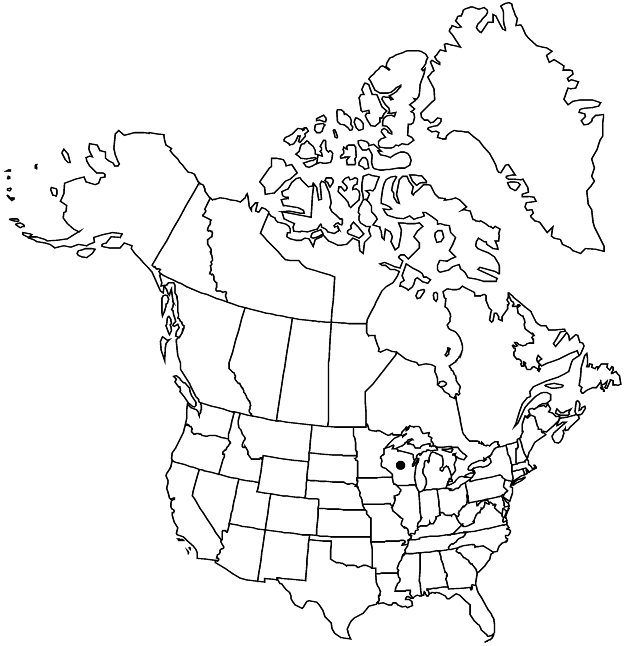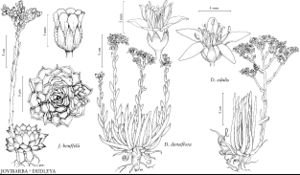Jovibarba heuffelii
Bot. Not. 114: 39. 1961,.
Leaves: rosettes usually closed, globose, 0.5–5 cm diam., producing offsets attached directly to primary roots; blade 1–1.5 cm wide, apex mucronate, surfaces usually glabrous, margins sometimes ciliate with reflexed hairs, often glaucous. Inflorescences erect, usually densely ca. 12–40-flowered, bracteate, 7–20 cm; dichasium compact, 3–5 cm diam.; rachis 5–15(–20) cm, glabrous; bracts 1 per flower, clasping at base, lanceolate, 1–3 cm, base broad. Flowers: petal margins fimbrillate, abaxially pubescent. 2n = 38.
Phenology: Flowering mid summer–fall.
Habitat: Rock outcrops, cliffs
Elevation: 0-1000 m
Distribution

Introduced; Wis., Europe.
Discussion
Jovibarba heuffelii is likely to have naturalized elsewhere in the flora area. Plants may have been misidentified as Sempervivum tectorum. It is intolerant of treading and therefore is likely to be found only in areas that provide a measure of physical protection.
Selected References
None.
